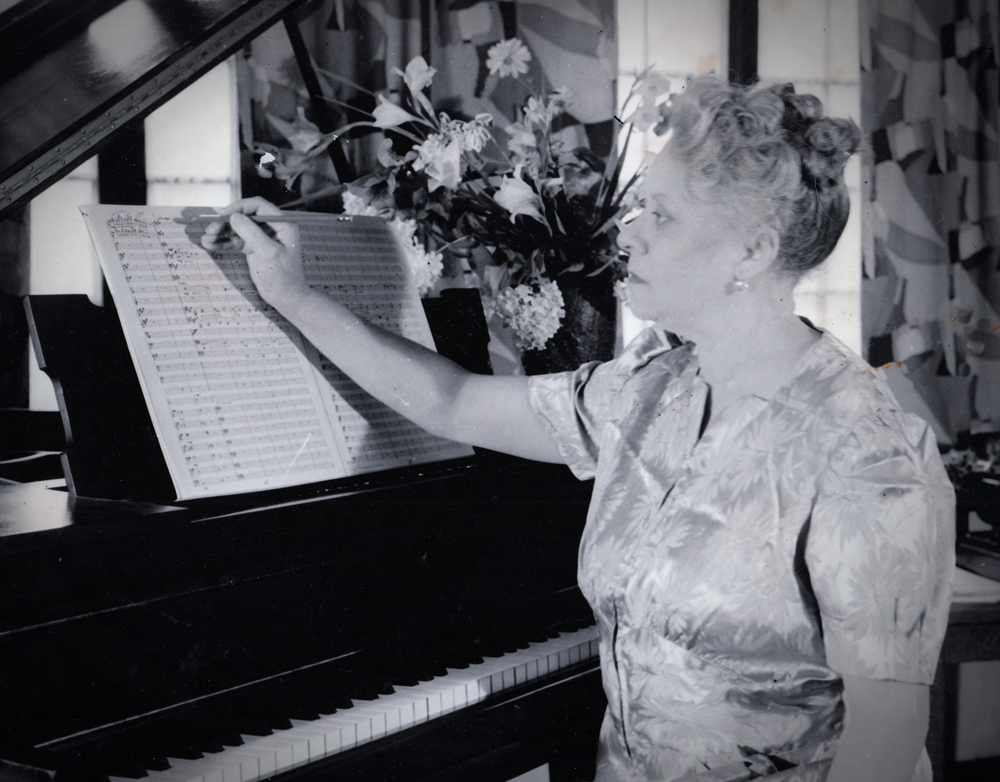 Florence Beatrice Price (1887-1953) Florence Beatrice Price (1887-1953) It is Black History Month, which means I always learn something. This Black History Month has caused me to re-think my position on the first woman, or women, who should be on an American bill. But first: Three years ago, Terrance McKnight of WQXR-FM did a documentary on a composer I had never heard of, Florence B. Price. The other night, PBS ran a visual documentary on Price, and by now her music was more familiar to me, ranging from traditional classical to black gospel. One of the experts (mostly black, via Arkansas Public Television) compared her to one of my favorites, Antonin Dvorak, who used folk music (in the deepest sense of the phrase) of two worlds, Bohemia and America. Artists generally have it hard, but black artists have it harder. The PBS documentary showed how Price was inspired by classical music but segregation and economics held her back. She always had to be double good. (Sound familiar?) In one pathetic episode, already accomplished, Price wrote a letter to Serge Koussevitzky, the legendary director of the Boston Symphony Orchestra, asking to compose for him, and she felt the need to call attention to being “Colored.” He never wrote back. Yet she had her triumphs. Mainstream conductors and critics and performers took her seriously, notably in her adopted home town of Chicago. In one of the great moments in American history, Marian Anderson performed at the Mall in front of the Lincoln Memorial, April 9, 1939, after Eleanor Roosevelt had forced the issue. Anderson sang a hymn by Florence B. Price, her friend. In the Arkansas documentary, an elderly black woman recalls, half a century later, being young and seeing a black woman singing to 75,000 people. The old lady daubs her eyes with a handkerchief. I bet you will, too. How hard it was, how hard it is, to be black in America. Just look at the dignity of people who have been poisoned in Flint, Mich., because of the incompetent and heartless regime of a latter-day plantation massa, Gov. Rick Snyder. But there are triumphs. Look at the lovely front-page photo of President Obama, speaking at a mosque in Baltimore, calling for a cessation of prejudice, as children smile in awe. We have seen those smiles on black service members when Obama visits the troops and on black citizens when Obama goes out in public. So there is that. But Black History Month reminds us how hard America has been on any black who aspired. That is why I am wavering in my position that Eleanor Roosevelt should be on a bill. I think she may be the greatest woman yet produced by the U.S.A., but her greatness may have been in her advocacy of the underprivileged, for people of all colors. Now I think the next bill (lose Andrew Jackson off the 20, not Alexander Hamilton off the 10) should be a tribute to the great women of color in America. Who? How many? I leave that to historians. But when that glorious bill arrives, somebody should play the classical music of Florence B. Price. Below: The multitalented Terrance McKnight accompanies Erin Flannery in “To My Little Son,” by Florence B. Price: 2/4/2016 06:20:09 pm
Thanks, George, for this informative piece on Florence B. Price, and for your related comments on the black experience in America. (The NYT photos from the archives are amazing...) And then there's the opera great (Mary Violet) Leontyne Price. No relation, I assume, but interesting name connection.
George Vecsey
2/5/2016 09:22:32 am
Peter: Thanks, nice to hear from you.
Kathleen McElroy
2/7/2016 05:17:53 pm
Highly informative. Sadly, I didn't know much about her. What is made invisible is very hard to remember. Heavy sigh. But now I'll look for her music.
George Vecsey
2/8/2016 08:10:37 am
Dear Kathleen: The one-hour program by Terrance McKnight would be a great primer. 2/11/2016 05:18:11 pm
MCLA, Massachusetts College of Liberal Arts, in North Adams, MA is celebrating Black History Month with an exhibition called “Black Lives Matter. It was initiated by their art department and will run for a month in MCLA’s store front gallery on Main Street. Comments are closed.
|
Categories
All
|









